In the past year, the term “AI” has become more ubiquitous than we’ve ever seen in the past, especially in the marketing world. It’s so prevalent in everyday language that something like “AI marketing strategy” can feel generic without some sort of qualifier, given the different types of AI technology that now exist.
So let’s break it down and make it less generic, shall we?
In this post, we’ll walk through all the major components that go into devising an AI-driven marketing strategy. We’ll discuss the best uses of AI and how it can be leveraged to save time and resources in your planning process.
Introduction to AI Marketing
Before we get started with creating a strategy, let’s first understand exactly what we’re talking about when it comes to marketing with AI.
What Is AI Marketing?
AI marketing is a constantly evolving approach to marketing that leverages artificial intelligence technologies to analyze data, predict trends and automate strategic marketing decisions.
It does this by using algorithms, deep learning, vector embedding, machine learning, and data analytics to gain deeper insights into consumer behavior and preferences, which allows marketers to create more personalized and, therefore, more effective marketing campaigns.
You could say that AI marketing represents the intersection of technology and creativity (or AI and human) to create super-targeted marketing campaigns and better customer journey experiences.
The Role and Impact of AI in Marketing
AI is advancing in its capability and utility so quickly that it is enabling businesses to reach new heights of efficiency and personalization than ever before.
The list of uses for AI in marketing is constantly expanding, but the main categories we’ve seen are:
- Customer segmentation and targeting: AI algorithms can analyze vast amounts of customer data to identify patterns and trends, allowing marketers to segment their target audience into more focused groups. This enables them to deliver personalized and relevant messaging to each segment, increasing engagement and conversion rates.
- Marketing automation and optimization: AI can automate repetitive marketing tasks, such as email marketing, social media management and ad campaign optimization. This frees up time to focus on more strategic initiatives and allows for real-time campaign adjustments based on performance data. A lot of this comes from selecting the right AI automation solutions to drive your project.
- Content creation and curation: AI can aid the content marketing development process, such as producing blog posts, social media updates, email templates, and even creative marketing materials. It can also curate existing content from various sources, ensuring that the right content reaches the right audience at the right time.
- Predictive analytics and customer insights: AI can analyze customer behavior data to predict future actions and preferences. This allows marketers to anticipate customer needs and proactively engage with them, which can lead to increased customer satisfaction and loyalty.
- Chatbots and virtual assistants: AI-powered chatbots and virtual assistants can provide 24/7 customer support, answer frequently asked questions, and guide customers through the purchasing process. This intimate knowledge of past purchase behavior, browsing history and customer preferences improves the overall customer experience.

In short, AI is taking a lot of the heavy lifting out of the hands of marketers and content creators and giving them more mind space to create, review and optimize material and campaigns.
So does that mean that marketing teams are growing smaller with the advent of AI? Well, that’s somewhat correct.
For example, generative AI tools like Google Bard and ChatGPT are getting increasingly competent at taking data inputs and presenting that information in fresh and intuitive ways. They do this so well that it minimizes the need for a lot of human labor normally required of a team of marketers.
In other words, it may take half as many writers to produce the same quantity and quality of content as it did without these tools. That’s the result of AI assistance.
But that isn’t to say it will just replace all marketers. The biggest part of leveraging AI to its fullest potential is knowing how to wield it properly, and that requires a diverse understanding of what it takes to get it to work for you in the best possible way.
How to Create an AI Marketing Strategy
Creating an AI-based marketing strategy is not far off in scope as is creating any traditional digital marketing strategy. The only difference is that you’re leveraging a lot more automated technology in the planning and data analysis process.
It becomes less a task of implementation and development and more about using the right information to its greatest potential. We do this by way of organizing data neatly and inputting the right prompts for the tools we’re using.
Let’s now go through the planning sequence to develop an AI-driven marketing plan.
1) Identify Goals and KPIs
First things first, you have to set goals you wish to obtain from your AI marketing plan. If it’s your first time planning a marketing strategy, then you can start by establishing some growth benchmarks you believe are attainable for your business to reach.
However, if you have past marketing data to refer to, you can use the metrics you’ve already collected to measure the performance of an AI-powered marketing campaign.
For our marketing team, if we’re working on a new client project, we look to industry benchmarks combined with historical data (if it exists). We consider revenue-tied metrics that drive success for the brand and focus on maximizing that one thing. You’ll want to focus on maximizing key performance indicators (KPIs) such as:
- Sales Revenue: This is the direct revenue generated from sales. It’s a clear indicator of market demand and the effectiveness of our marketing strategies.
- Predictive Analytics Tools: Tools like IBM Watson, Google AI, or Salesforce Einstein provide sophisticated predictive models that can forecast sales trends and customer demand.
- Dynamic Pricing Software: Tools like Competera or Pricefx use AI to adjust pricing in real-time based on market demand, competition, and other factors, maximizing revenue potential.
- Customer Lifetime Value (CLV): Understanding the total worth of a customer to the brand over the entire duration of their relationship. A higher CLV suggests that we are successfully retaining customers and maximizing revenue from these relationships.
- CRM with AI: Platforms like HubSpot CRM or Zoho CRM with AI capabilities can analyze customer interactions and transactions to predict future behavior and identify high-value customers.
- Personalization Engines: Tools like Adobe Target or Dynamic Yield offer personalized content and recommendations to customers, enhancing their experience and increasing CLV.
- Conversion Rate: The percentage of visitors to your website or users of your campaign who take the desired action (like making a purchase). This metric helps in understanding the effectiveness of your marketing messages and strategies in converting potential customers into actual customers.
- AI Chatbots: Tools like Drift or Intercom use AI to engage visitors on websites, providing instant assistance and guiding them towards conversion.
- A/B Testing Tools: Optimizely or VWO, with AI features, can automatically test different variations of web pages to identify which version converts the best.
- Cost per Acquisition (CPA): This measures how much it costs, on average, to acquire a new customer. Keeping this number low relative to the average purchase value is crucial for profitability.
- Programmatic Advertising Platforms: Platforms like The Trade Desk or MediaMath use AI to automate ad buying, placing ads more efficiently and targeting the right audiences, reducing CPA.
- Ad Performance Tools: Google Ads and Facebook Ads Manager use AI to optimize ad campaigns, targeting and tweaking them for the best results.
- Return on Advertising Spend (ROAS): This metric evaluates the effectiveness of advertising campaigns in generating revenue. A higher ROAS means that our marketing efforts are translating effectively into sales.
- Marketing Analytics Platforms: Tools like Moat or Google Analytics offer AI-driven insights into advertising campaign performance, helping to optimize ROAS.
- AI-Powered Attribution Models: Platforms like Convertro or Attribution use AI to accurately track and attribute conversions to the correct channels, ensuring that advertising budgets are spent where they are most effective.
Is your goal to get more phone calls, more sales from e-commerce channels or more form completions? Whatever your target metric is, that will be the center focus by which you measure the success or failure of your AI-assisted content and strategy. Make sure your goal is a hard number, something that is easy to tell whether or not you’ve reached it or not.
Key Takeaway: Choose one thing to focus on, and define your entire AI marketing strategy around it.
2) Assess Your Current Marketing Strategy
Before implementing AI, it’s crucial to thoroughly evaluate your current marketing strategy and goals. This assessment provides a foundation for identifying opportunities for improvement and aligning AI initiatives with existing strategies. You should:
- Review Current Strategy: Analyze your current marketing strategies, including channels and content. Look at areas where your previous initiatives did well and where they could stand to be improved. From there is where you’ll base your new approach.
- Identify Gaps: Compare your current strategy and goals to identify gaps and areas where AI can provide solutions. Look for quick wins that can fill content gaps in a short time frame with nominal effort before moving on to heftier content.
- Define Opportunities: Determine specific areas where AI can enhance your marketing efforts, such as personalization, automation and data-driven decision-making.
For instance, if your brand benefits from video content, you might start by looking into AI video tools that can help you streamline the production process for your marketing videos:

Another example could be if your brand produces a lot of images, you could explore different AI-powered tools that aid and assist in the process of generating graphics.
This evaluation process also involves considering key marketing metrics such as:
- Customer retention rate
- Customer lifetime value
- Traffic and bounce rate
- Cost per lead
- Marketing ROI
For example, if a marketing team spends a significant amount of time creating and distributing blog content, an AI technology content generator could be an ideal solution to save time and resources while maintaining high-quality content output.
Key Takeaway: By identifying your marketing strategy’s strengths and weaknesses, your can select the most suitable AI tools and platforms to enhance their marketing efforts and achieve their goals.
3) Research Keywords and Interests with AI
Keyword research is a critical component of any successful SEO strategy, and AI can significantly enhance this process. AI-powered tools can analyze vast amounts of data to uncover relevant keywords, identify trends and generate insights that inform content creation and search optimization.
Traditional methods of keyword research often involved manual searches and analysis, which could be time-consuming and prone to human error. With the help of AI, marketers can save valuable time and resources by automating these repetitive tasks.
Natural language processing is a crucial aspect of AI-powered keyword research tools as it helps understand human language better. It enables these tools to gather insights from user queries in search engines or social media platforms like X or Facebook.
We’ll talk more about AI marketing tools to use shortly, but it’s worth mentioning one of our favorite tools that leverages AI to find interests related to a keyword, and that’s SparkToro:

SparkToro is great at matching keywords with interests and offering expanded data related to your input. It’s a terrific tool for social media marketers and is well worth your time to explore it.
And with that, let’s start talking about AI marketing tools befitting an AI strategy….
4) Selecting the Right AI Marketing Tools and Platforms
The whole deal with AI in digital marketing is that there’s some sort of tool working in the background of your marketing process that is automating things for you. So what kind of guide would this be if we didn’t show you the best tools on the market?
With practically any facet of marketing today, there is some clever solution out there that can simplify your workflow. Whether it’s adapting video to text, transcribing notes from a podcast, annotating clickpaths from a recorded video session, or generating graphics, there’s a solution out there for it.
While there’s no way we could cram every deserving AI marketing tool on this list, we can highlight our top fifteen AI marketing tools, each of which has a distinctive strength that sets it apart among the vast myriad of solutions flooding the scene:
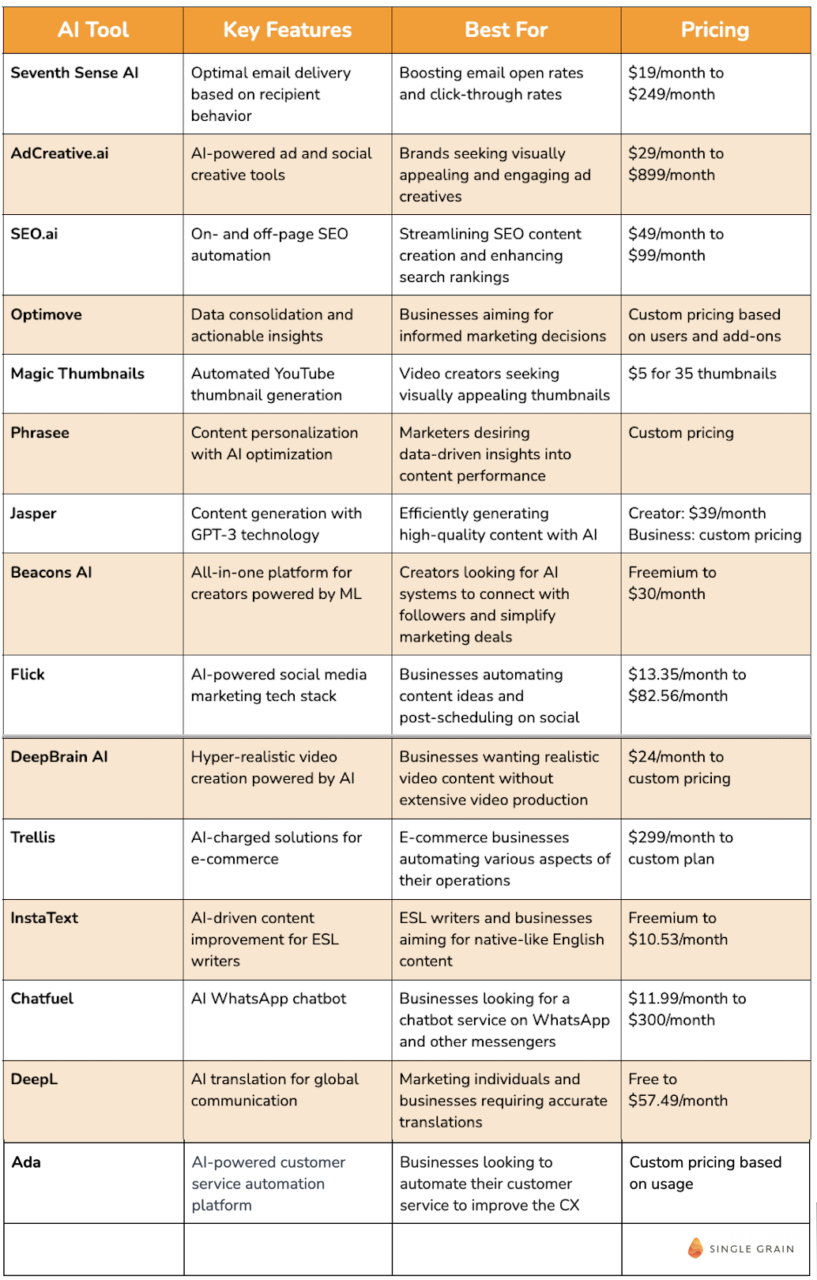
Key Takeaway: Don’t feel like you need to subscribe to every AI marketing tool under the sun. A lot of the ones in our list have overlapping functionality, so try one or two at a time as suits your needs. Make use of the free trials and hone in on the solution that truly helps you plan smarter and produce better.
Areas to Integrate AI Into Your Marketing Plan
Alright, so now you’ve created your goals, assessed your current marketing strategy, done your keyword research and have your list of tools. But how do you actually put these AI tools to good use? Let’s explore a few ways you can implement these tools in your AI marketing strategy.
1) Chatbots for Customer Interaction and Segmentation
Tools like Ada meticulously analyze customer data and act as, in their words, “a full customer service team” all in one software, which can be used to delve into nuanced behaviors, customer preferences and demographics:

This deep understanding of customer profiles empowers businesses to create personalized marketing campaigns that resonate with each segment, which fosters stronger connections and builds customer loyalty. As a result, businesses can achieve improved campaign performance, increased customer engagement and, ultimately, drive revenue growth.
Integrate AI-powered chatbots to provide instant, tailored responses, and enhance your customers’ satisfaction. These virtual assistants evolve with each interaction, continuously learning and adapting to customer needs.
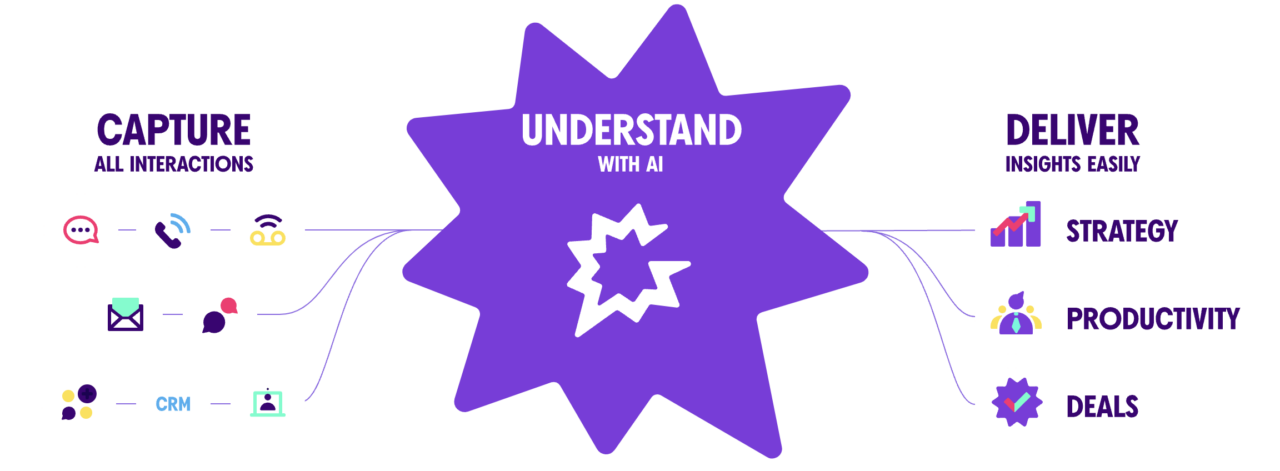
Tip: Knowing your audience to a T is insurmountably important, and AI can help you understand everything about them. The synergy between AI and customer interaction not only provides immediate solutions, but promotes an environment of continual improvement.
2) Personalized and Consistent Content Creation
You can use AI-driven content generation tools to produce tailored messaging that speaks directly to individual preferences. This approach not only maximizes engagement but also ensures consistency with your brand.

A tool like Jasper, which uses advanced GPT-3 technology, can analyze your audience’s past interactions and preferences, creating content that feels almost handcrafted for each user. For instance, if your target audience frequently engages with eco-friendly topics, Jasper can generate blog posts or social media content emphasizing sustainability in your products.
A major challenge for growing brands is maintaining a uniform brand voice across all marketing channels. This is where AI tools like Phrasee come into play. Phrasee specializes in maintaining a consistent tone and style, so that whether a customer reads an email, a social media post or a blog article, they encounter a unified brand personality.
For instance, Nike has mastered the art of consistent messaging across various platforms – from Twitter to their website content. Using AI tools, smaller brands can achieve similar consistency.
Tip: Personalized content isn’t just about what’s relevant (although that is a component); it’s about maintaining a cohesive brand narrative across all touch points. Whether it’s maintaining an inspirational or humorous tone, AI ensures that this voice resonates in every piece of content.
3) Localization of Content
AI can be a saving grace for all of the time it takes to convert content from one language over to another.
At first blush, DeepL looks like any other translator, but it is actually far more robust than most. It leverages AI to adapt content from different industries into more technical translations that translate to a higher, more technical level based on the type of vertical. And it does this for you easily when by just uploading your files into the platform.

There’s also InstaText, which guides translations from one language to another, but helps the writer by recommending phrasing that would appear more natural to a native speaker of the translated language.
Tip: Localizing your content can make a huge difference in appealing to new audiences that prefer to to experience your brand’s content in their native language. Try out one or both of these tools to quicken your pace with adapting your content into more languages.
4) Video Production Assistance
AI is making video production quicker with how easily it can generate elements of your content. It can help with adapting other forms of content into scripts, generate thumbnails, and even generate whole videos on it’s own.
DeepBrain AI is capable of taking video script inputs and converting that into AI-generated spokesperson videos. These are great for training programs, or even some types of promotional content when used well. It’s very much a “plug-and-play” type of tool, which can really help creators scale speed up their video production process.
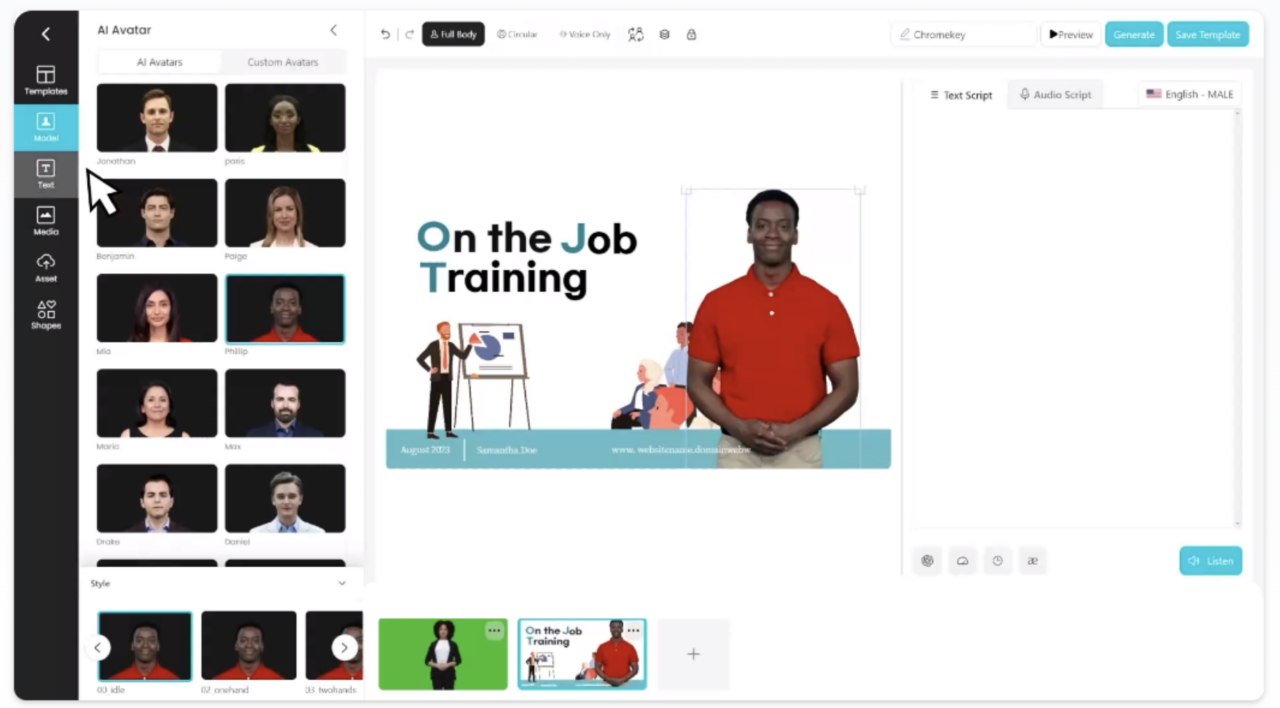
If you’re trying to cut down the time it takes to come up with thumbnails, Magic Thumbnails is a great tool to try out. It basically takes the title of your video, a brief description of the content therein, and then generates a batch of thumbnails with different variations of phrases and images based on your inputs.
Tip: AI video tools operate better the more you inform them, so always try to give them as many details as possible if they ask for descriptions of what you want them to generate.
5) Automated Email Marketing Campaigns Optimization
Elevate your email campaigns with AI-driven tools that analyze user behavior, recommend personalized content, draft email subject lines and bodies, and optimize send times. This not only increases open and click-through rates but ensures that every email resonates with your audience.
Seventh Sense AI is our go to when it comes to split testing email marketing campaigns. It allows you to categorize groups of recipients on your email list so you can tailor different messaging for different audiences based on how you believe they’ll react to your offer.
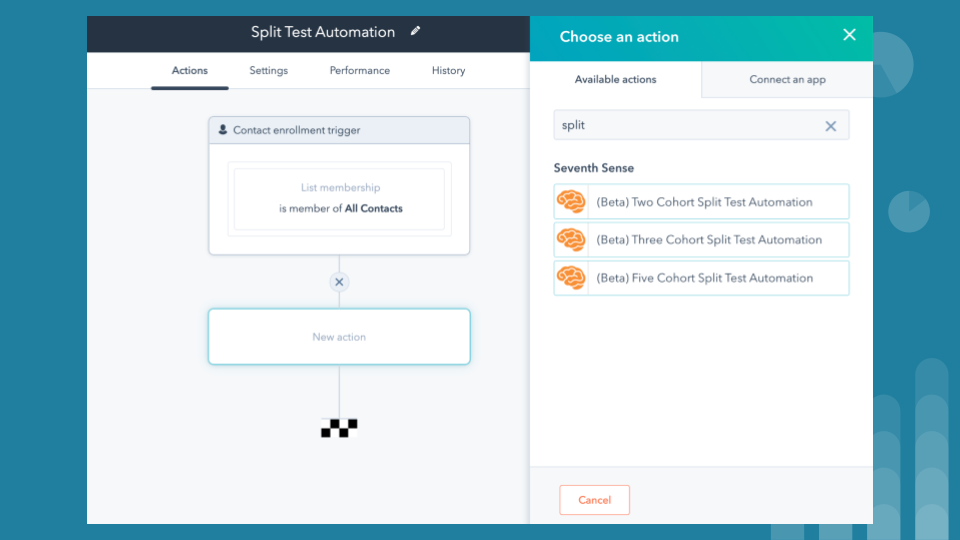
It also helps you pin down the best times to send out your emails, taking a lot of the guesswork out of when to send what.
Tip: Look at the data behind your email marketing campaign. Look for patterns in user behavior with your emails and measure past performance against the new performance of your AI-augmented emails.
6) Social Media Management
Use AI to analyze social media data and schedule posts at optimal times. This data-driven approach not only enhances your social media presence but ensures that your brand engages with your audience authentically.
AdCreative.ai is brilliant for helping social media advertisers devise the best graphics and images with presumed performance indicators. It does this based on the mountains of ad data from these social platforms to nail down the features of ads that perform the best.
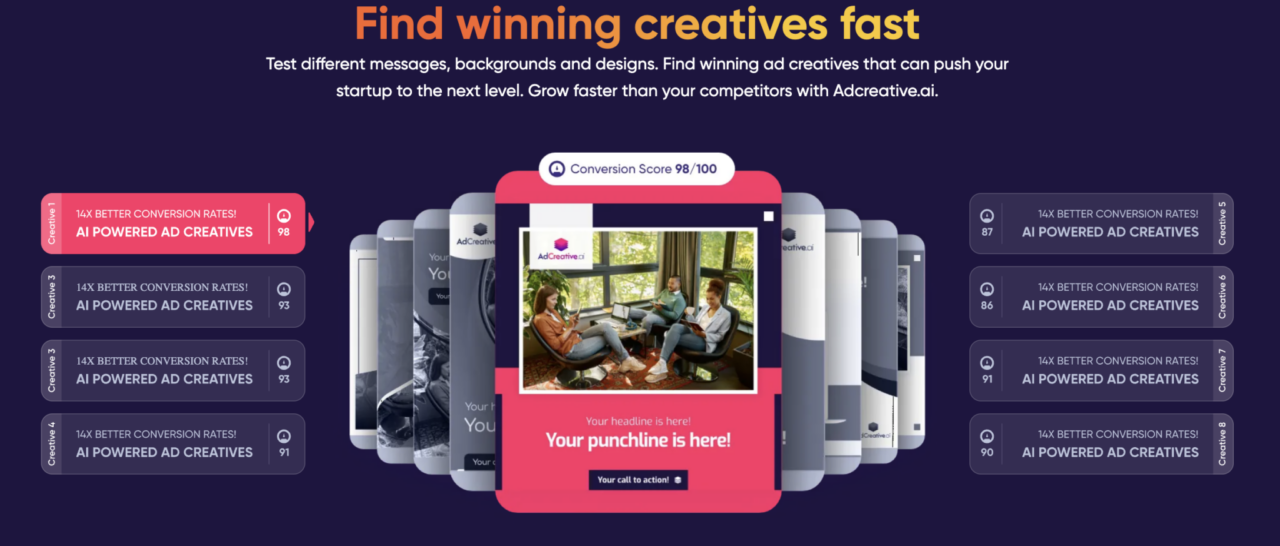
Using AI in the right ways can also help you disperse your content across multiple channels and in a capacity that fits each individual platform.
For instance, it’s generally more acceptable (and expected) to post multiple times per day on X, whereas on platforms like LinkedIn you’re better off posting once or twice a day at most. Having Flick help you parcel out your content for each platform will help you post more intentionally on each platform with the right amount of content for each.
Tip: Social media management with AI is about staying in tune with trends while maintaining an authentic and meaningful connection with your audience with a steady, predictable stream of content that people can anticipate. Use these tools to help you gauge the performance of your content on social channels, adjust your scheduling wherever necessary, and modify the substance of your content.
AI Marketing Strategy: Challenges and Considerations
Of course, there are naturally some drawbacks of AI in digital marketing. If left fully automated, you’ll find that future campaigns will become generic and soulless. You don’t want that.
And there’s a risk of becoming overly reliant on AI tools, which can result in less innovative campaigns and a failure to respond adequately to rapidly changing market conditions.
People are getting better at discerning generic AI-generated content. AI can often lack the human touch that is crucial in marketing, like originality, creativity and emotional connections. This can make marketing efforts feel impersonal or out of touch with actual customer sentiments.
Brands need to be concerned, too since AI systems can inadvertently perpetuate biases present in their training data. This can lead to unethical marketing practices or biased customer interactions, which can harm a brand’s reputation and lead to unfair treatment of certain customer groups.
And it’s not just your human audience, it’s Google, too.
Google’s algorithms are becoming increasingly sophisticated in recognizing content that has been generated by AI. They do this by looking for patterns and characteristics typical of AI-generated text, such as certain repetitive phrases, lack of depth or nuance, and other markers that differentiate it from human-written content.
The primary concern, from the search engine’s point of view, is the quality and usefulness of the content, as per their E-E-A-T guidelines, not necessarily whether it was written by a human or AI. So if AI-generated content is unique and valuable to users, it may still rank well. But remember that AI-generated content lacks the human touch, which can affect its quality.
And although there aren’t penalties specifically for AI content, there are penalties for low-quality content.
Google’s guidelines emphasize the importance of original, high-quality content. Websites that rely heavily on low-quality content – AI- or human- generated – might see a drop in their search rankings.
Make it a practice to use an AI content detector like:
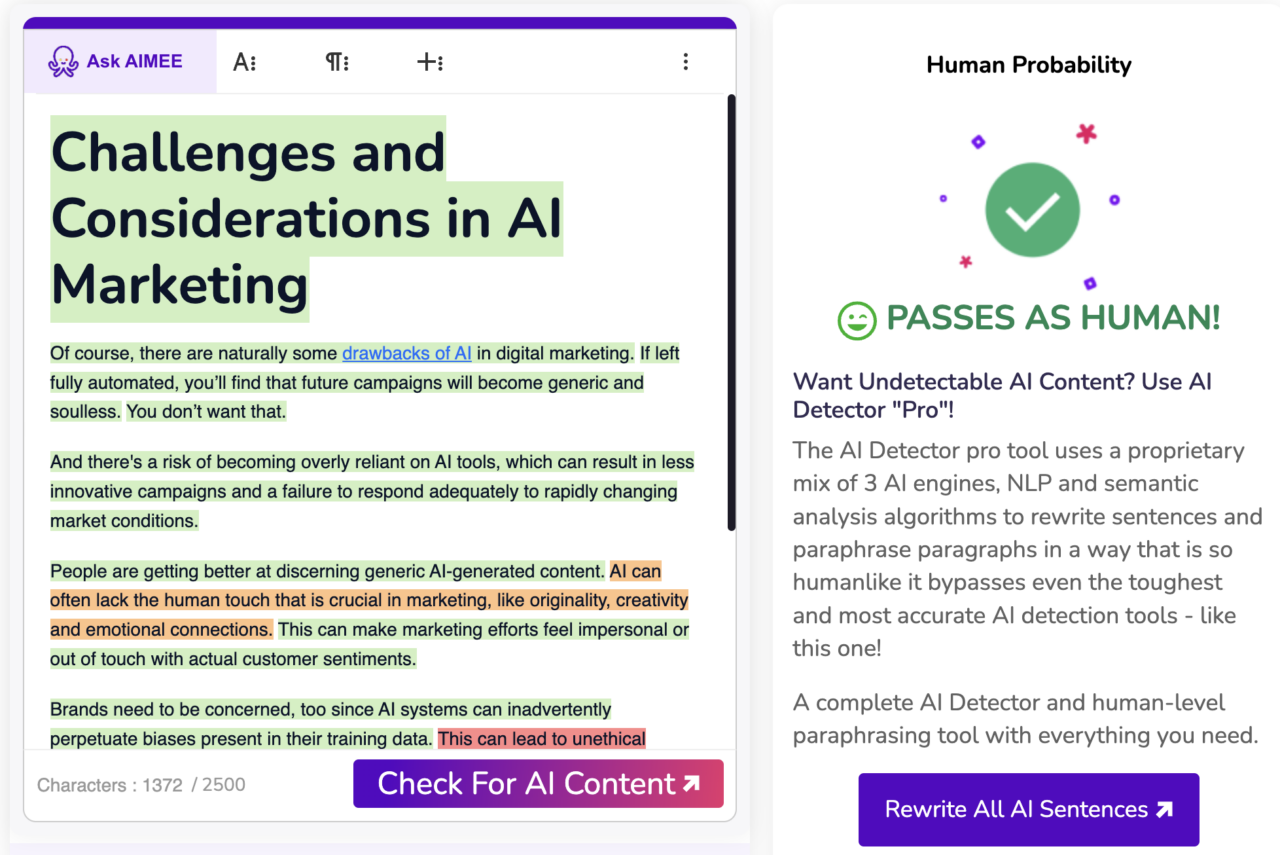
- Copyscape (a general plagiarism detector)
Always vet your AI outputs. QA everything and measure their progress against previous iterations. Only then will you know how truly effective your marketing approach with AI is working.
Last Word on Creating an AI Marketing Strategy
We are constantly tinkering around with AI tools and solutions, trying to weed out the chaff and discover the truest gems that can tangibly improve our marketing efforts.
Any of the fourteen tools we provided above are great starting points for any marketer kicking the tires with AI solutions as well as seasoned marketers looking to expand their bionic toolkit.
How will you create your AI marketing strategy? Could it use the help of an AI marketing agency?
If you’re ready to level up your marketing strategy with AI tools, Single Grain’s AI experts can help!👇
For more AI content, check out:
* Google Bard YouTube Integration: What Marketers Need to Know
* AI Operations Management: The Role Every Business Needs NOW
* How to Use AI for Your Business the Right Way
* 100+ ChatGPT Prompts to Scale Your Marketing Campaigns
* 4 Ways to Use ChatGPT to Grow Your Business
* The Drawbacks of Using Too Much AI in Marketing
* What You Need to Know About AI Regulation in Content Creation
* 3 Best AI Tools for Ads Marketers Should Be Aware Of
* How to Leverage AI Content Writing Tools Efficiently
* How to Use AI Generated Video Tools for Marketing
* The Future of Marketing: 14 AI Tools You Need to Use






